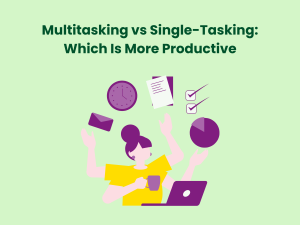Modern life is filled with distractions and responsibilities competing fiercely for our time and attention. Juggling work, family, hobbies, and health demands can quickly become overwhelming without a system. But being productive amid chaos is possible with the right framework. This is where the Getting Things Done or GTD methodology comes in.
GTD provides a holistic approach to tasks and time management focused on maximum efficiency and focus. It has become one of the most popular productivity methods used worldwide. In this comprehensive guide, we will cover the critical tenets of GTD, how to implement it, as well as tips and tools to become a productivity master.
What is the Getting Things Done (GTD) Method?
Created by productivity consultant David Allen, GTD is a structured approach to managing tasks and responsibilities. It aims to capture and organize all the things demanding your attention and then efficiently work through the tasks. The pillars of the Getting Things Done system are:
– Collect – Gather all your to-dos and commitments in one place.
– Process – Organize, categorize, and prioritize all the inputs.
– Organize – Structure everything into appropriate lists, folders, and categories.
– Review – Regularly re-evaluate and update your system.
– Do – Work consistently through your action lists and inboxes with focus.
GTD provides a holistic framework covering everything from collecting raw inputs all the way to focused execution. Implementing and sticking to the methodology reduces stress and delivers consistent productivity.
Core Principles of the GTD Method
GTD revolves around several fundamental principles:
– Capture everything – Put all your tasks, ideas, worries, etc., into your system. Don’t hold anything in your head.
– Clarify – Clearly define action steps for each input. Be specific and concrete.
– Organize – Systematically structure and assign inputs using categories, lists, tags, etc.
– Review frequently – Regularly reassess your lists to keep them updated and relevant.
– Focus – Having organized everything, you can now execute tasks single-mindedly.
GTD leverages these fundamentals to transform messy chaos into an organized, trusted system that promotes everyday productivity.
Implementing GTD Step-by-Step
Follow this step-by-step process to implement Getting Things Done effectively:
Collect
– Gather unfinished tasks, ideas, worries, etc., by dumping them into your inbox tool.
Process
– Go through inbox items one-by-one asking, “What is this?” Clarify the next actions.
– If an action will take < 2 mins, do it immediately. Otherwise, process it further.
Organize
– Categorize actions based on context – calls, errands, work projects, etc.
– Assign each action to appropriate lists like “Calls,” “Errands,” “Shopping,” etc.
– Prioritize actions within each list based on importance and urgency.
Review
– Review all lists regularly – daily/weekly for critical lists and monthly for others.
– Check off completed items. Reassess priorities and add new actions. Keep lists updated.
Do
– Pick one list and work through the actions one-by-one with complete focus on each task.
– Work systematically through each context list during dedicated time blocks.
With consistent practice, GTD transforms into an intuitive workflow, allowing productivity amid chaos.
GTD Tips for Maximum Effectiveness
Follow these tips to become a GTD ninja:
– Capture everything – Every worry, big project, idea, etc., into your inbox. No mental clutter allowed!
– Break big tasks down into 2-3 step actions to make them doable. Go granular.
– Group similar actions into “context lists” for efficiency, e.g., errands, calls, emails, etc.
– Assign due dates and reminders for essential actions so they don’t slip.
– Identify 1-3 “most important” actions to focus on each day for maximum impact.
– Limit work-in-progress to maintain focus. Don’t jump between multiple projects and lists simultaneously.
– Reviewing and updating your system weekly is essential to keep it functional. Don’t let it stale.
– Have a misc/someday list for non-urgent ideas you may want to revisit later. Keep your active lists streamlined.
GTD takes diligence and practice but quickly provides immense benefits in reducing anxiety and boosting productivity.
GTD Tools and Software
GTD software and tools make it easier to capture, organize, review, and execute tasks:
– Todoist – Powerful task manager with multiple list views and due dates.
– Microsoft To-Do – Simple, intuitive lists. It’s good for basic GTD.
– Evernote – Notes can be great unstructured inboxes. Tag for organization.
– Google Docs – Simple document-based inbox and lists.
– Things – Elegant app focused on today’s tasks. Simplifies GTD.
– OmniFocus – Full-featured GTD software with enterprise-level customization.
– Trello – Kanban boards provide visual workflow management.
Find tools that fit your needs and preferences. Automating parts of GTD reduces friction and allows consistency.
FAQ
Q. How often should you review your system?
A. Review daily or weekly for following action lists related to current projects. Look at someday/maybe and reference lists monthly. Regular reviews ensure your system is updated.
Q. What is the difference between a project and subsequent action?
A. A project is a significant endeavor comprising related tasks and steps. Following actions are the specific, tangible to-do steps that increment a project forward. Project = goal, next action = how.
Q. How detailed should the next action steps be?
A. 2-3 words suffices for more straightforward actions, but complex activities may require a 2-3 sentence description detailing the specific sub-steps involved so the action is crystal clear. Enough detail to make it actionable.
Q. What are some GTD best practices?
A. Capture everything. Clarify the next actions. Use tags/lists to organize. Review regularly – don’t let it go stale. Limit work-in-progress for focus. Prioritize ruthlessly. Maintain balance with rest and recovery. Develop the habit.
Q. What tasks are suited for GTD?
A. GTD excels for knowledge work tasks where you manage yourself but also works great for routine tasks by providing structure. Creative work with undefined steps may not benefit as much from GTD.
The Getting Things Done methodology transforms chaotic overwhelm into relaxed productivity by providing a system for task clarity, organization, review, and focused action. Implement GTD to experience less stress and better output in work and life. Achieve more by doing less with GTD!



